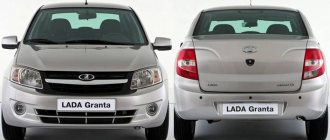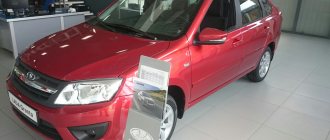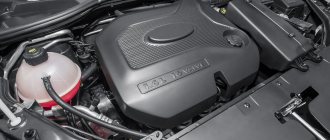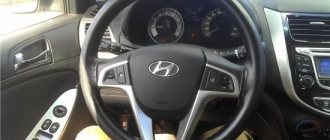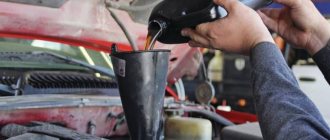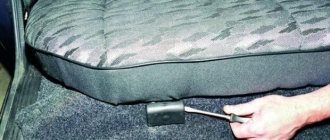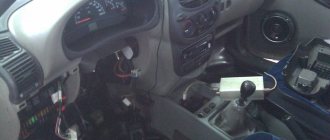Disc imbalance
One of the reasons when the steering wheel shakes at speed may be the wheel disc itself (which is defective). Often even a new product has an imperfect shape. Serious inconsistencies in composition are also possible. Therefore, the weight differs in different areas. The central part of the wheel stretches to where the mass is greater. This is centrifugal force. Since the center will constantly shift, the centrifugal force also changes direction. Therefore, the steering wheel will vibrate through the tie rod chain at high speeds.
Wheel deformation
The degree of their deformation quite significantly affects beats or vibrations. The disc can be damaged if you drive carelessly over potholes and potholes. A crooked wheel can be identified by visual inspection. They look at the rim of the disc and look for dents. Most often, deformations are on its inner side. Cast wheels, unlike stamped ones, are much less likely to deform.
Therefore, if the steering wheel shakes at speed, you should immediately carefully check the wheels. The disc may be dented. It is also recommended to check the wheel on a stand. But it is not always possible to identify curvature in this way. If the wheel is very crooked, then vibration throughout the body will indicate this.
When old or deformed tires are installed on the rims, this may be one of the reasons for shaking. At the same time, the body may also vibrate. Symptoms can be confused with deformed discs. So, at low speeds only the steering wheel can shake. As you gain speed, both the steering wheel and the body will shake. The greater this deformation, the more significant the vibrations will be. They are also felt at low speeds. The way out of this situation is to replace the wheels or tires.
Vibration appeared when starting the engine: what could be the reason?
As a rule, one of the most common engine malfunctions is vibration, which can only appear when the engine is cold or when starting the engine, be present constantly at idle or under load, intensify as the engine warms up, etc.
In any case, it is important to understand that vibrations in the engine, which are transmitted to the body, steering wheel or gearshift lever, indicate failure of certain elements and parts. In this article, we will look at the main reasons why engine vibration occurs, and also pay attention to why the engine vibrates strongly when starting.
Suspension and steering
Excessively worn car suspension parts greatly affect how the car contacts the road. Ball joints, steering rods, and wheel bearings have a certain amount of play. As they move, they can cause imbalance. Sometimes all suspension elements are subject to deformation - silent blocks, levers, stabilizer.
If everything is fine with the tires and wheels, but the steering wheel shakes at speed, then it is necessary to check and replace worn parts of the chassis. Vibrations at low speeds often occur due to play in the rack. It is recommended to check the tie rods.
Steering wheel vibration at speed due to wheel imbalance
A common cause of this problem is the accumulation of a large amount of soil or snow on the tires. This deficiency often appears for a while. As practice shows, vibration on the steering wheel disappears at a speed of 100 km/h, but may return after a few minutes. It is easy to find out the reason for the steering wheel beating at speeds of 100, 120 km/h with alloy wheels. If you have them made of steel, this will not be so easy for the driver to do, because the ventilation holes here are small. Lumps of earth often collect inside the disk and are not visible to the naked eye.
In order to use only the best consumables when caring for your car, we recommend that you familiarize yourself with the rating of motor oils.
Steering wheel shakes when braking
The VAZ-2170 (like many other models) has front disc brakes. Therefore, it is worth considering possible problems in this case. When the steering wheel shakes when braking at speed, there are three reasons. These are crooked wheels, worn brake discs or wheel bearings. If the brake disc is curved, then the pad will follow the shape of this surface. Thus, due to the curvature, the wheel rotates unevenly. This happens due to great inertia. If you start to rock the wheel, it will resist. At speed this resistance is especially high. Therefore, vibrations are felt both on the steering wheel and on the pedals.
Balancing required
Runout on the steering wheel and car body with increasing speed is inevitable if the wheels are not balanced. The uneven distribution of mass relative to the center of the wheel rim leads to such consequences. The action of multidirectional centrifugal forces leads to the appearance of multi-frequency oscillations, which are felt as a beating in the car interior.
The problem may manifest itself in the following cases:
- Installing new tires. Replacing tires on rims or putting new rims on old tires must be accompanied by balancing. Even for the manufacturer, achieving ideal weight distribution and geometric parameters seems to be an extremely difficult task.
- Loss of old balancing weights. This is especially true for light alloy wheels, where the weights are glued to the inside of the wheel. Let us remember that in the case of stamped rims, the weights are placed in the outer shoulder of the rim.
- Deformation of the rubber or disk due to falling into a deep pothole, a strong impact with the curb and other similar obstacles.
- Natural imbalance. During operation, any wheel will lose its established balance. It is recommended to carry out scheduled balancing every 15-20 thousand km.
Where does steering wheel wobble come from?
Steering wheel beating at the moment of braking means spontaneous jerking of the steering wheel in different directions. In especially advanced cases, the vibration is so strong that the driver has to literally catch the car on the road. At speeds above 50 km/h, the phenomenon creates a real danger for vehicle passengers.
Since the steering wheel is rigidly connected to the front wheel hubs through a rack and ball ends, the source of the problem must be sought in the chassis and braking system of the car. The main causes of strong vibration lie in various defects of the brake disc:
- the working part of the product is deformed and has a wavy surface;
- due to the impact, the disk was damaged and cracked;
- The spare part was originally defective or installed incorrectly.
It is no coincidence that the front brake discs are named as the culprits. As soon as the working surface of the part changes its shape a little or gets a defect, after the pads are activated, the front wheels will begin to wobble, repeating the rotation of the uneven element. The steering wheel hits even harder when braking at high speed, as the speed of the front wheels increases.
Other causes of vibration
Steering wheel vibrations that are not associated with the car jerking in different directions appear for the following reasons:
- One of the vehicle's process fluids, for example, transmission oil, got on the pads as a result of oil seal wear. Possessing significant viscosity, the lubricant adheres well to any surface and disrupts the normal operation of the brakes when the pedal is pressed sharply.
- The internal elements of the steering rack have worn out, and significant play has appeared.
- The steering rod ball pins have become unusable.
- Inoperability of shock absorbers and front struts. Vibration on the steering wheel is felt when braking sharply and at the same time entering a turn.
Note. Problems associated with wear of ball joints and shock absorbers also appear on the wheels of the rear axle. Most often, brake fluid gets on the pads, the reasons are faulty working cylinders and leaky rubber cuffs.
A strong side impact of any wheel on a high curb (for example, due to ice or an accident) can lead to deformation and subsequent vibration. The main load is taken by the disk, wheel bearing and various suspension joints. Any of the listed parts can become cracked and cause the steering wheel to vibrate during braking.
Engine vibration at idle, cold or warm engine: possible causes
Let us immediately note that there are many reasons for the appearance of internal combustion engine vibration, ranging from torn engine mounts (mounts) to misfires and tripping of the power unit. For a more accurate determination, first of all, you should pay attention to one or other symptoms.
The fact is that vibration can be either constant (regardless of warming up and loads on the unit), or manifest itself in a certain operating mode (idle or high speed, cold or hot). Engine vibration may also appear when the internal combustion engine is cold, but as it warms up it completely disappears. Let's figure it out.
- For example, if the engine has recently been disassembled for repair (perhaps a major overhaul), then there is a high probability that the crankshaft was not properly balanced after reassembly. The result is beating and increased vibrations.
- We also note that after repairing the engine, imbalance and vibrations can be caused by different weights of the parts of the cylinder-piston group. The greater the difference in weight, the stronger the vibrations will be. For this reason, experienced craftsmen weigh pistons, pins, etc. before assembly.
- Often the cause of vibrations is that the engine is misfiring, that is, one or more cylinders for some reason do not work or are malfunctioning. As a rule, eliminating the cause of tripping automatically eliminates the presence of vibrations in the power plant.
- Do not forget that an incorrectly aligned timing belt or chain also causes vibrations. The reason is that the engine is running unstable due to a violation of the valve timing.
- Many engines have special balancing shafts in their design, which are necessary in order to “dampen” vibrations. It is quite obvious that problems with these shafts will lead to increased vibration of the motor.
- If you have recently moved from one car to another, you should consider that different engines may differ in vibration load. The number of cylinders, layout and a number of other features affect the level of vibration. In simple words, a regular 6-cylinder in-line engine can operate with less vibration than a 4-cylinder and, especially, a 3-cylinder engine. Moreover, in this case we are not talking about malfunctions, since for a particular internal combustion engine a certain level of vibration can be considered the norm.
- Let’s also add that in order to reduce vibrations, many engines have a so-called torsional vibration damper on the crankshaft. If there is a problem with the element, the motor will begin to vibrate more strongly.
As you can see, at the initial stage it is important to accurately determine the reason for the increase in vibrations. For example, in most cases it is enough to replace the engine mount or solve the problem that the engine is shaking. However, it also happens that the power unit itself needs to be disassembled and repaired.
How is a malfunction diagnosed?
To identify the runout of one of the front wheels, you will need a jack, wheel chocks and a wheel wrench. The diagnostic procedure is as follows:
- Park the machine on level ground and pull the handbrake all the way. Additionally, secure the car with boots placed under any rear wheel.
- Jack up the front wheel until it hangs off the ground. On vehicles with front-wheel drive and all-wheel drive, be sure to move the gearshift lever to neutral.
- Rotate the suspended rim with your hands. If you feel stuck in a certain position, remove the wheel and check that the uneven disc is rubbing against the pads, causing strong vibration when braking.
The essence of the diagnosis is simple: after operation, the brake pads move back just enough to free the rotating surfaces. The lining must be forced apart to its maximum open position. If the metal working part is bent, then when rotating the part will begin to get stuck between the pads.
Advice. It is not a fact that jerking of the steering wheel in different directions is caused by deformation of one disc. It is likely that the second element is also bent. Therefore, be sure to check both front mechanisms for defects. At the same time, inspect the parts for cracks (especially after a side impact).
If the vibration does not cause the car to deviate from a straight path while driving and does not cause the steering wheel to twitch, check the suspension and chassis components. Drive the vehicle into the inspection ditch and jerk the steering rods to check for play. The performance of shock absorbers is checked by rocking the car up and down with body weight. After applying force, the machine should swing no more than 1 time.
